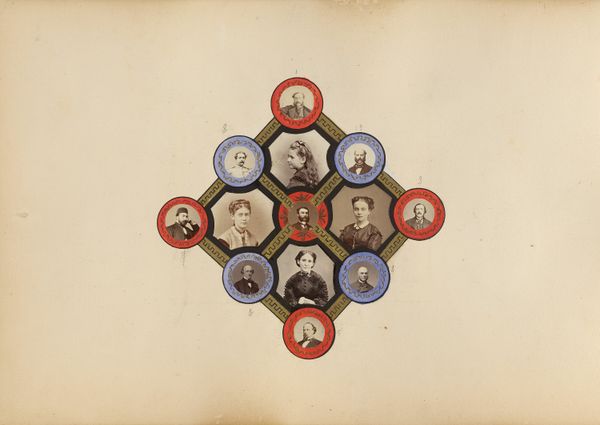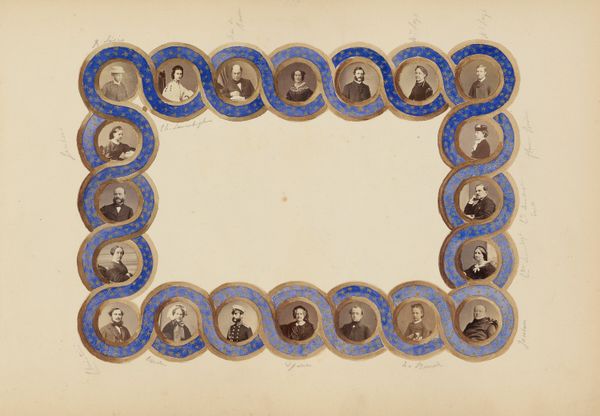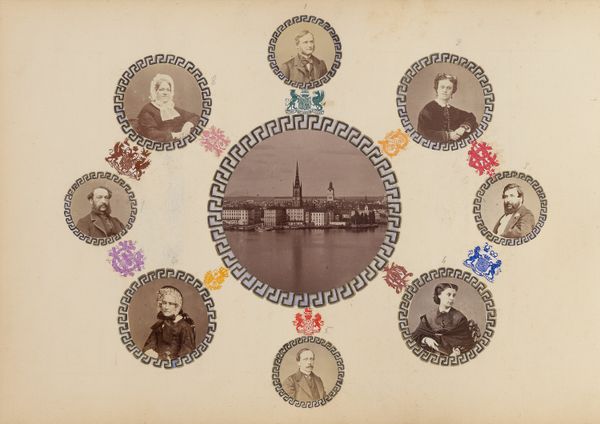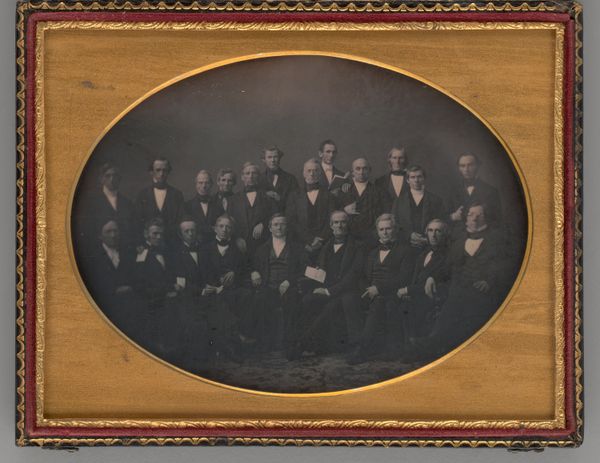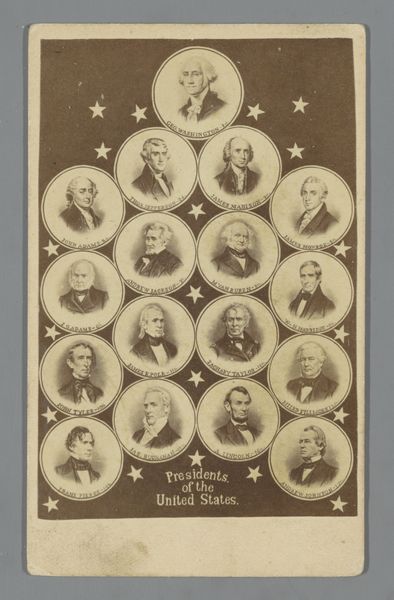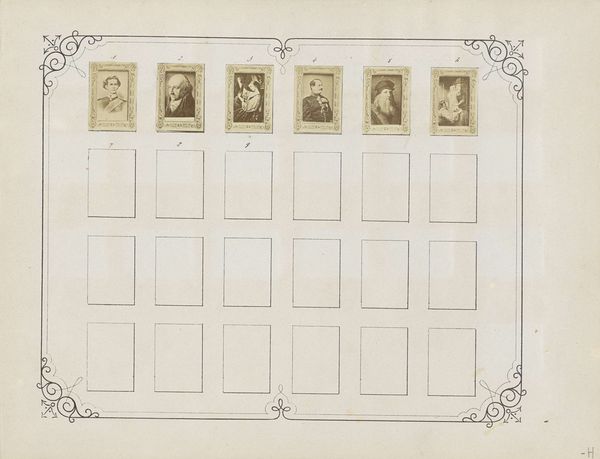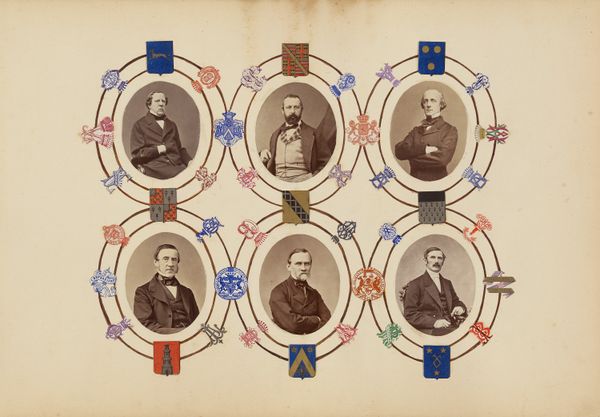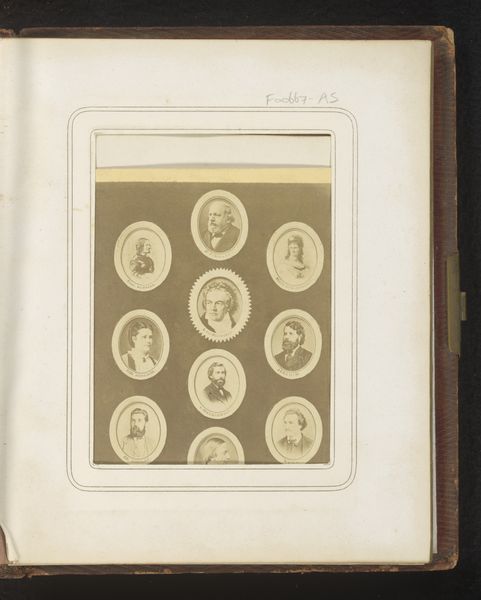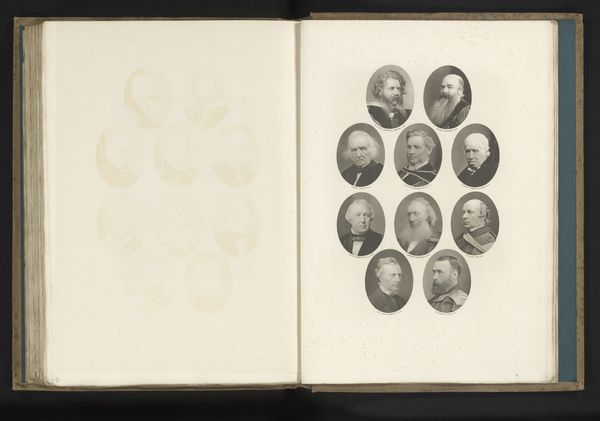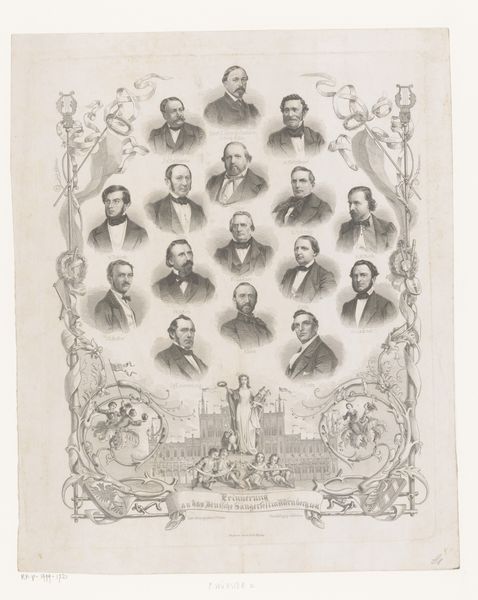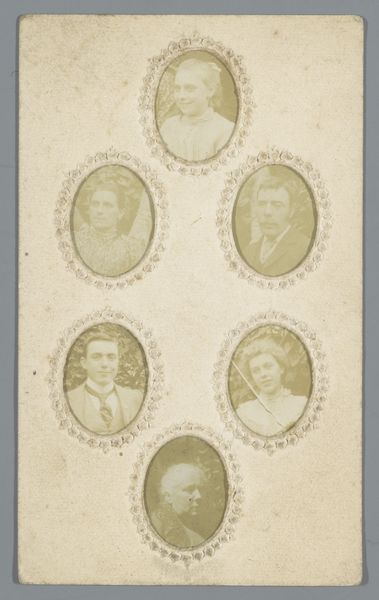![[Nine Portraits in Original Passe-Partout] by James William Bailey](/_next/image?url=https%3A%2F%2Fd2w8kbdekdi1gv.cloudfront.net%2FeyJidWNrZXQiOiAiYXJ0ZXJhLWltYWdlcy1idWNrZXQiLCAia2V5IjogImFydHdvcmtzL2YyYTU0MDZlLTFmYWYtNDQyYy1hNjU1LThmMmRhNjFkNzZjZi9mMmE1NDA2ZS0xZmFmLTQ0MmMtYTY1NS04ZjJkYTYxZDc2Y2ZfZnVsbC5qcGciLCAiZWRpdHMiOiB7InJlc2l6ZSI6IHsid2lkdGgiOiAxOTIwLCAiaGVpZ2h0IjogMTkyMCwgImZpdCI6ICJpbnNpZGUifX19&w=3840&q=75)
[Nine Portraits in Original Passe-Partout] 1880s
0:00
0:00
painting, oil-paint
#
portrait
#
painting
#
oil-paint
#
academic-art
#
miniature
Dimensions: Frame: 34.9 x 34.9 cm (13 3/4 x 13 3/4 in.) Image: 4 x 3.5 cm (1 9/16 x 1 3/8 in.) Image: 7.7 x 6 cm (3 1/16 x 2 3/8 in.)
Copyright: Public Domain
Curator: Welcome. We’re looking at “[Nine Portraits in Original Passe-Partout]”, an intriguing artwork from the 1880s currently housed in the Metropolitan Museum of Art. The artist, James William Bailey, worked with oil paint to create these miniatures. Editor: My first impression is of an arranged marriage photo album. There's an austere feeling to these formal portraits. Curator: It’s fascinating how Bailey captured such detail within these small-scale portraits. During this period, miniatures served a variety of social functions, ranging from private keepsakes to political tools and gifts between diplomatic actors, which were meant for intimate exchange. Editor: Agreed. What strikes me is how each portrait appears almost self-contained. Look how their expressions give little away! They seem to belong to some kind of unspoken code of representation. I also wonder if the rigid structure and formal poses point to broader societal norms around gender and class expectations. Curator: The piece presents an interesting crossroads between photography and painting, two mediums undergoing significant development at the time. Bailey explicitly identifies the works as photographs coloured in oil. It raises interesting questions about how the visual hierarchy of portraiture circulated as currency, as social ritual. Editor: Definitely. Thinking about representation, it is also striking that most of these people appear to be white Europeans. Given the legacy of imperialism at this time, the absence of non-white faces suggests so much about who had the privilege of having their image preserved in this way, not just in art but also in society. Curator: I find myself pondering what happened to all these subjects after these portraits were made. What kind of families, or perhaps what kind of social positions did they hold within society? It would be quite something to uncover some details about them! Editor: Yes, absolutely. Looking beyond the art history, what about thinking critically about the legacies these figures may represent? Portraits like these should challenge us to ask complex questions, and make no assumptions about any one life. Curator: Thank you for shedding light on those critical aspects, reminding us that an art piece is a confluence of artistry, representation and historical forces, revealing more about societal structures. Editor: And that even historical objects can ignite fresh dialogue!
Comments
No comments
Be the first to comment and join the conversation on the ultimate creative platform.
